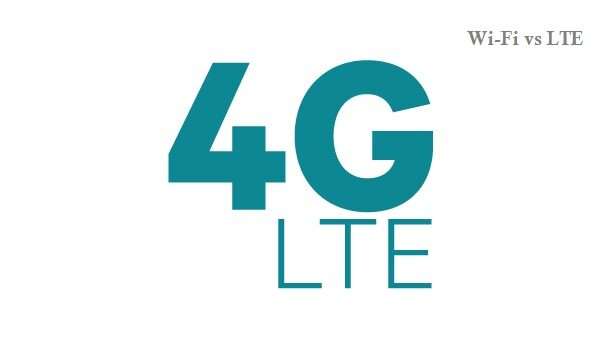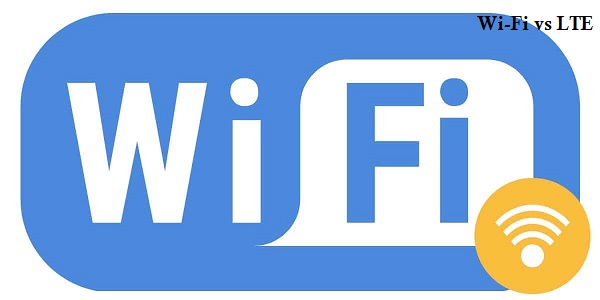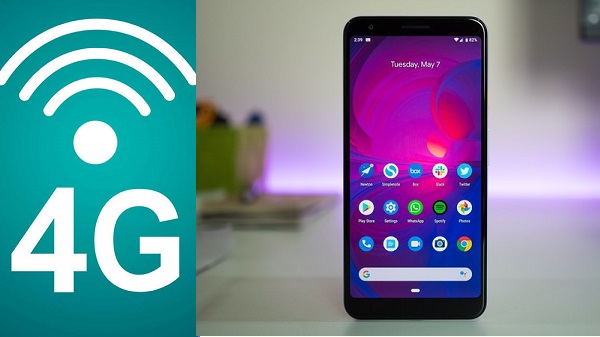In summary, both LTE and Wi-Fi are two different ways of gaining access to the Internet on modern computing devices e.g. laptops, smartphones, tablets, etc. Wi-Fi, on the other hand, is a wireless tech, which lets many kinds of computing devices, such as your personal computer (PC) and smartphones, connect to a wireless network via a router. How is LTE different from Wi-Fi? Owing to the importance of the Internet in our day-to-day lives, we examine this question in detail in today’s post.
What Is Long Term Evolution (LTE)?
LTE is a 4G wireless network technology that provides high-speed Internet on your phone via your mobile network provider. It has higher bandwidth, and that translates to greater connection speeds and improved underlying technology for voice calls (also called VoIP) as well as multimedia streaming. LTE is more suitable for the heavier and bandwidth-demanding use on mobile devices. LTE will only work on a mobile device that supports it, and you can check this on the specs sheet of your device. The naming of the standard is stated as 4G-LTE. Furthermore, it isn’t all devices showing LTE in their specifications that can be relied upon because the acronym is now used as a tool for marketing, which could be misleading. A handful of manufacturers fail to meet customers’ expectations when providing LTE hardware. What is now the way out of this conundrum? Before you buy your smartphone or other mobile devices, consider reading reviews, and checking testers’ verdicts. As stated earlier, LTE is a 4G tech and is among the fastest few available as of now with 5G being the only tech with better connection speeds.
What is WiFi?
Wi-Fi, on the other hand, is a wireless tech, which lets many kinds of computing devices, such as your personal computer (PC) and smartphones, connect to a wireless network via a router. It’s the most popularly used means of wireless data communication within a fixed location. Wi-Fi is a trademark of an international group of companies, called the Wi-Fi Alliance, which deals with wireless LAN technologies & products. Wi-Fi is typically mistaken to be an acronym for “wireless fidelity” and is also occasionally written as WiFi, WIFI, Wifi, or wifi; however, all these spellings are not formally approved by the Wi-Fi Alliance. The wireless network is also used as a synonym of the term, “wireless”. However, wireless is actually a much broader concept. The primary requirement to use Wi-Fi is a device that is capable of transmitting the wireless signal, such as a smartphone, router, or PC. What a router does is to transmit an internet connection that is coming from outside the network, such an Internet service provider (ISP), and then supply that service to devices, which are able to reach the wireless signal, within the vicinity. Wi-Fi can also be used via a Wi-Fi hotspot, allowing a mobile phone or PC to share its wireless or wired internet connection, and this is similar to the way a router operates. Having looked at the definition of LTE and Wi-Fi, we now expound the differences between both connection standards.
LTE vs. Wi-Fi — Availability
As of now, LTE technology is only supported by some mobile phones, providing 4G network access. On the other part of the divide is Wi-Fi tech, which was introduced on the market with the launch of the 802.11b standard in 1999. The standard was designed for offering wireless networking functionality to mobile devices and computers. The Wi-Fi standards, unlike LTE technology, need a router to deliver wireless network connectivity.
LTE vs. Wi-Fi — Transfer Speeds and Range
LTE technologies offer data transfer speeds that lie in the region of 100 megabits/second – 1 gigabit/second. But the speeds of data transfer via Wi-Fi standards are in the range, 11 – 600 Mbps. These transfer speeds can vary as a result of one or more conditions & situations, like network traffic, bad weather, and device capabilities. The former standards support connected devices, having widespread network coverage (usually nationwide). But as for Wi-Fi, computing devices have to be within 300ft of a wireless router; if not, the wireless network connection will be lost.
How to Use 4G LTE
Different smartphones from different brands have various ways to turn on 4G, and this is why we have highlighted the specific steps to use 4G LTE on a handful of popular phone manufacturers. Activating 4G LTE on Samsung Phones
Head to the Settings menu Press the Connections option Navigate down to Mobile Networks and press it Tap the Network Mode selection A list of LTE network selections will now come up; choose the one suitable for your wireless network
Activating 4G LTE on LG Phones
Head to the Settings menu Hit the Tethering & Networks feature Press Mobile Network Press Network Mode Tap on LTE if you see it listed among the network options
That’s all! If you discover that the LTE network isn’t shown in the Network Mode section, take the following steps to activate LG on your device:
Head to your phone dialer and enter ##4636## A menu should pop up Press Phone Info > Pick Prefered Network Type Tap the drop-down box and pick LTE
Activating 4G on HTC Phones
Head to the Settings menu Press the Connections option Navigate down to Mobile Networks and press it Tap the Network Mode selection A list of LTE network selections will now come up; choose the one suitable for your wireless network
Activating 4G on Google Pixel Phones
Swipe up on your home screen & press the Settings icon Press the Network & Internet option Press the Mobile Network menu Tap on the Advanced feature Pick the LTE option to turn on 4G access
Activating 4G on Tecno, Infinix, and iTel Here is how to enable LTE on devices from these 3 Transsion Holding brands:
Swipe up on your home screen & press the Settings icon Press the Network & Internet option Tap SIM cards Press the Mobile network selection Pick the specific SIM you want to use 4G on Tap Preferred network type Pick 4G from the menu that pops up
And you are good to go! Activating 4G on Other Phones You can use any of the sets of steps above to enable 4G LTE on your device if your manufacturer is not among those mentioned above.
How to Use Wi-Fi
The method to turn on Wi-Fi on most smartphones is similar, regardless of their brand. Generally, here are the steps to take:
Swipe down on the home screen Tap the Wi-Fi icon among the array of features you see
To switch it off, you can take the same steps. How to Connect to a Wi-Fi Network
Swipe down on the home screen and press the Settings icon Tap Wi-Fi or Wireless & Networks Pick a wireless network from the provided list Enter the network password if requested Hit Connect button
All things being equal, you should now be connected to the wireless network.
In a Nutshell
Going through this post, it now becomes as clear as daylight how LTE is different from Wi-Fi. Basically, LTE is a 4G wireless network tech built on the High-Speed Downlink Packet Access 3G network protocol and offers high-speed wireless cellular network connectivity via your mobile computing devices. However, Wi-Fi is a wireless tech, which allows several kinds of computing devices, such as your personal computer (PC) and smartphones, to connect to a wireless network via a router. Apart from the differences between LTE and Wi-Fi, we have also laid the steps to use either tech on your smartphone.



